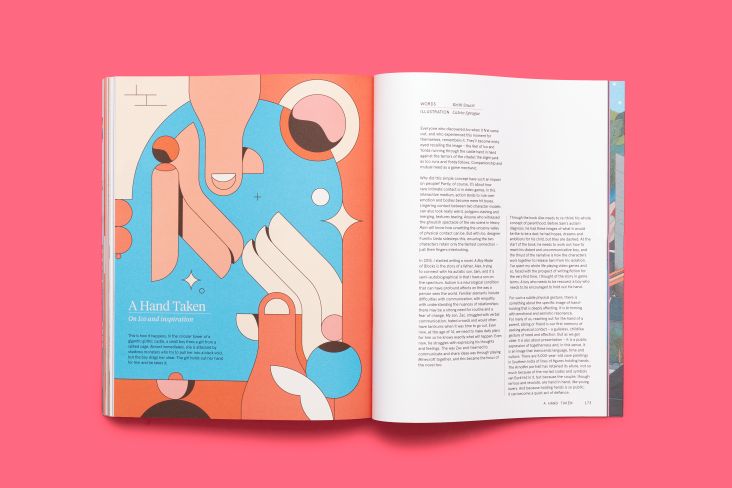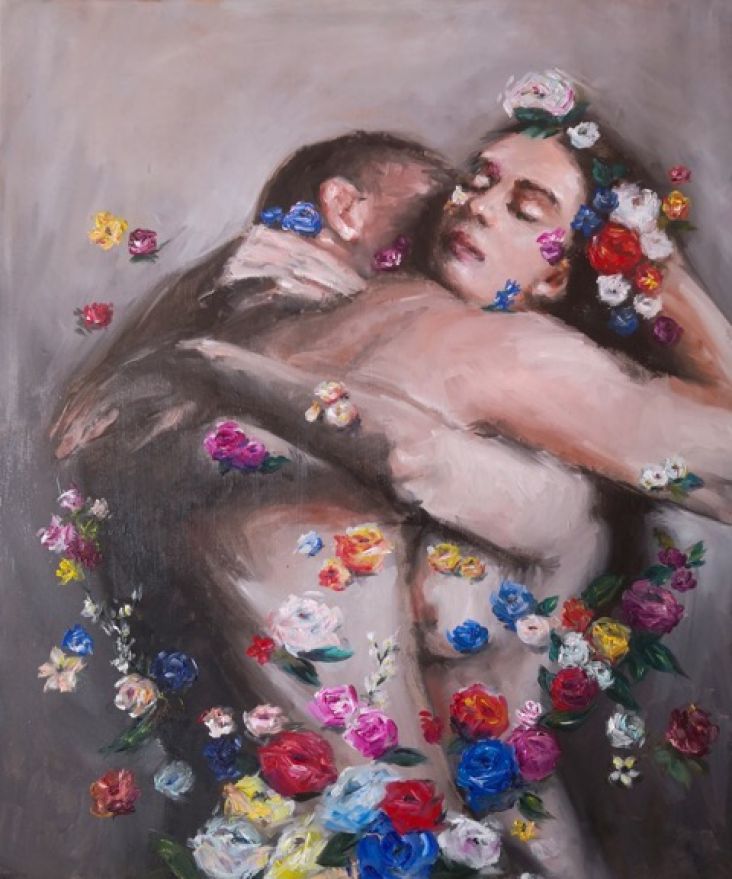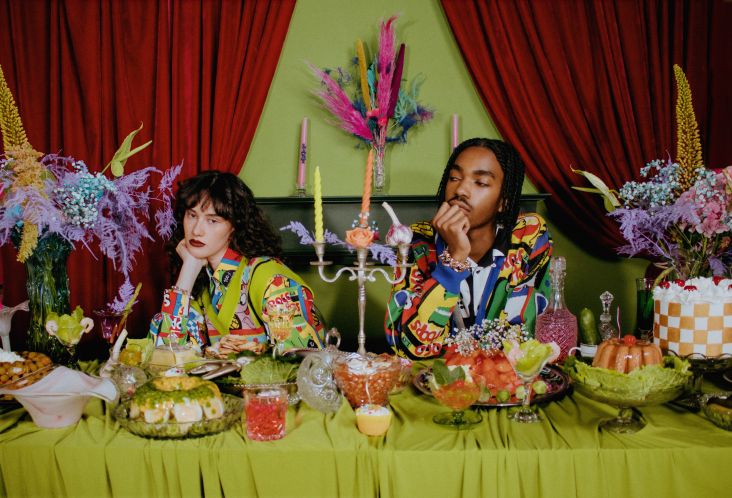Brian Blomerth on his new book on psychedelics and the magical Mushroom Revolution
Mushrooms are having a moment. And we're not talking about the innocent button or closed cup varieties, either. More of the magical kind that gets you high. Today, on National Mushroom Day, Brooklyn illustrator Brian Blomerth is releasing his second book on the subject of psychedelics, this time taking us on a trip with shrooms.
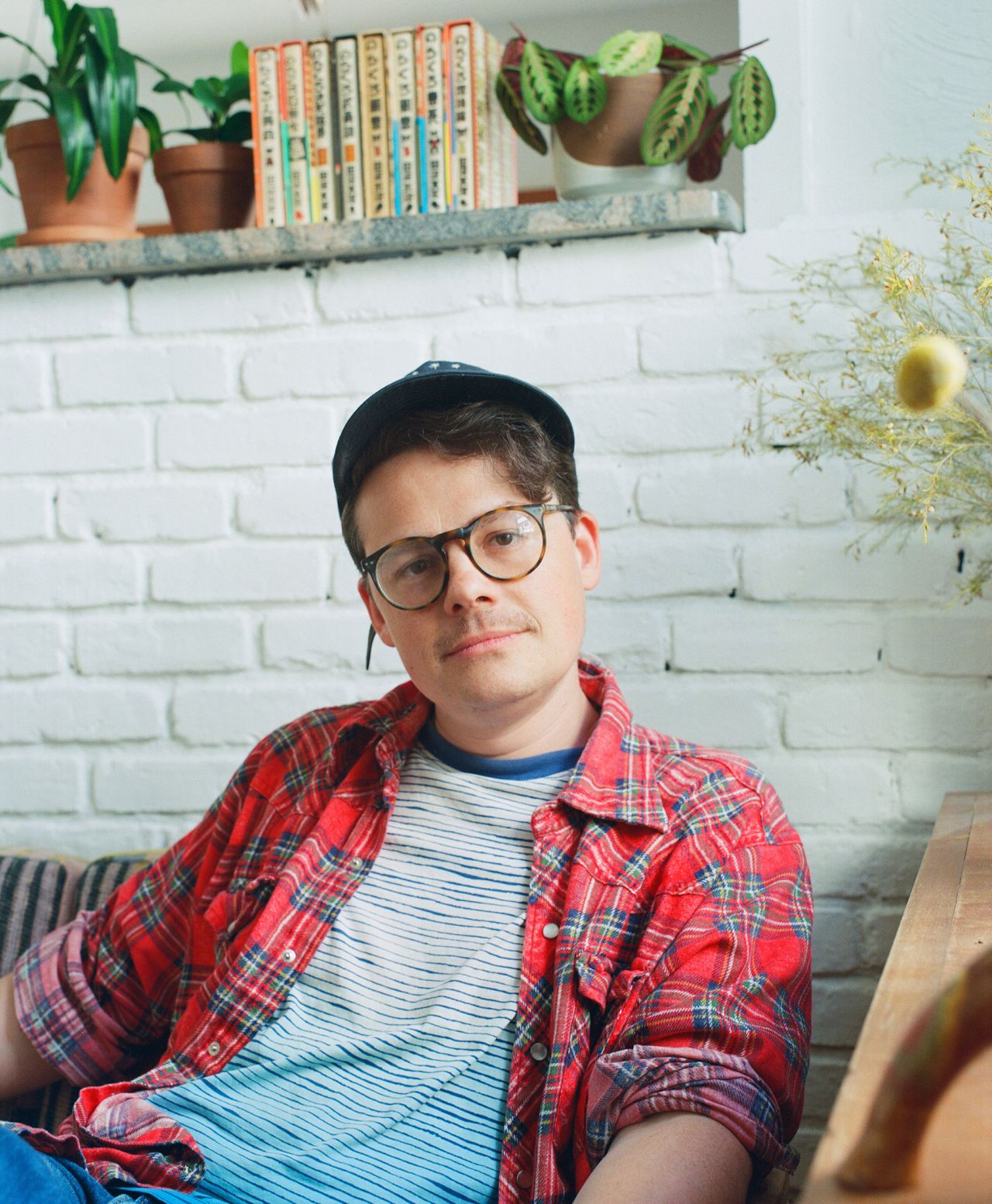
Brian Blomerth (Photo credit: © Dondre Stuetley)
In 2019, Brian released his debut novel, Bicycle Day, an illustrative, colourful retelling of the discovery of LSD and the world's first-ever acid trip. That mind-bending illustrated account went deep into Swiss "mystic chemist" Albert Hofmann's discovery, winding through time, with locations incorporating almost recognisable Disney-like characters in collage, digital overlays and hand-drawn pen on paper.
His latest book, Mycelium Wassonii, continues on this Technicolour, heavily researched theme, but this time is an account of the lives and discoveries of R. Gordon and Valentina Wasson, the scientist couple responsible for the uptake in recreational mushroom use in the United States. Published by Anthology Editions, the book's foreword is written by Paul Stamets, a mycologist and leading voice in mushroom advocacy. In it, he points out, quite rightly, that "although most readers know of Gordon's massive contribution to bettering our understanding of the importance of psilocybin and amanita mushrooms throughout history, few understand that none of these achievements would have occurred without his wife" who was, in fact, an accomplished paediatrician and who was a "true inspiration for their collective journey".
Why the fascination with mushrooms? "My first guess is life blooming in dark corners or springing up out of nowhere is relatable," Brian tells Creative Boom. "The second guess is even with all the knowledge we can access at our fingertips, mushroom identification remains a difficult and trying field. Break them, bruise them, smell them, identify their surroundings. In the Wassons' time, there were only a handful of others who could call themselves experts. Through letters and books, they all connected. Neither plant nor animal. Look down, and one might be sunbathing right near you. They are fun guys."
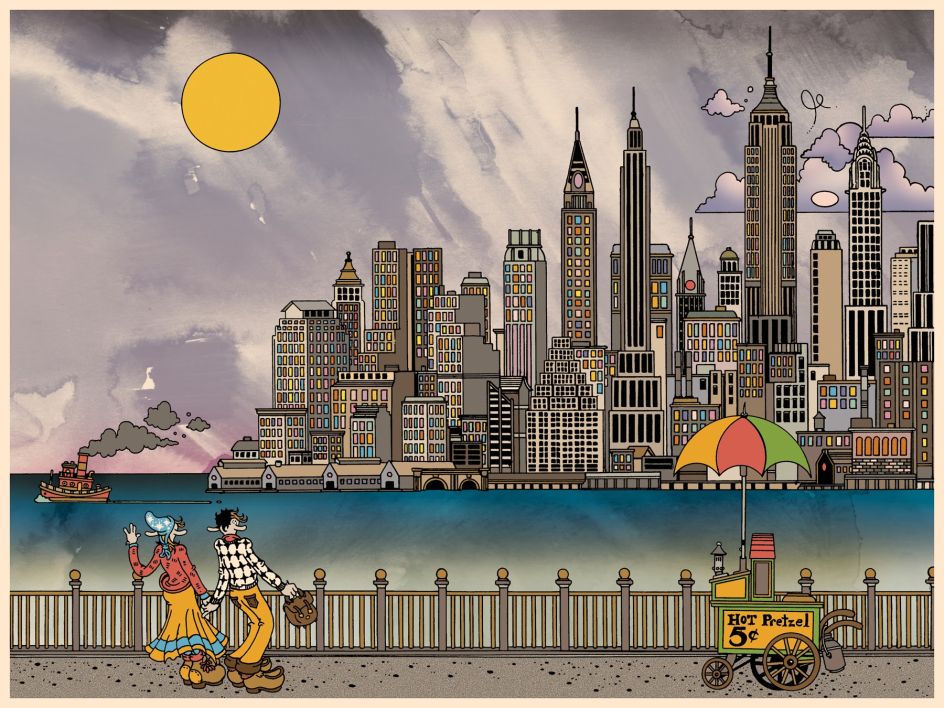
Brian really goes to town in his highly trippy visual biography, which tells us how the couple's studies in ethnomycology began after their 1927 honeymoon in Upstate New York when Valentina happened upon some edible wild mushrooms. Both were fascinated by the fungi, so they embarked on some field research that eventually led to the famous publication, Mushrooms, Russia and History in 1957. What followed was a seminal article in Life magazine titled Seeking the Magic Mushroom, which has been attributed to sparking wide interest in psilocybin mushrooms, particularly with hippies and beatniks of that era.
"For this couple, mushrooms were a way for them to connect to each other," says Brian, "and like a mushroom that spread rapidly outside themselves. Their books are the result of never-ending correspondence with others: some like-minded mycophiles but some not. There is a hilarious letter between R. Gordon Wasson and Agatha Christie on her use of mushrooms as a murderous plot device. Another hilarious letter concerns a zookeeper in Finland and feeding reindeer the Amanita Muscaria mushroom. They combed through various linguistic and etymological surveys the world over, looking for any footnote or folk-tale related to mushrooms."
"The Wassons spanned the globe from the comfort of the U.S. Postal System and the New York Public Library," he continues. "This was a hobby for them. They both had day jobs. (He as a banker at J.P. Morgon, and she as a paediatrician). They travelled to Mexico on vacation time. Obviously, their travels in Mexico are what everyone wants to talk about...but to relate it back to a mushroom, most of the vital parts of a mushroom remain hidden underground. The book they wrote together doesn't concern itself so much with mushroom biology or physicality. The book is on humankind's relationship to mushrooms throughout history. I think it's truly beautiful that through this hobby, they made some history."
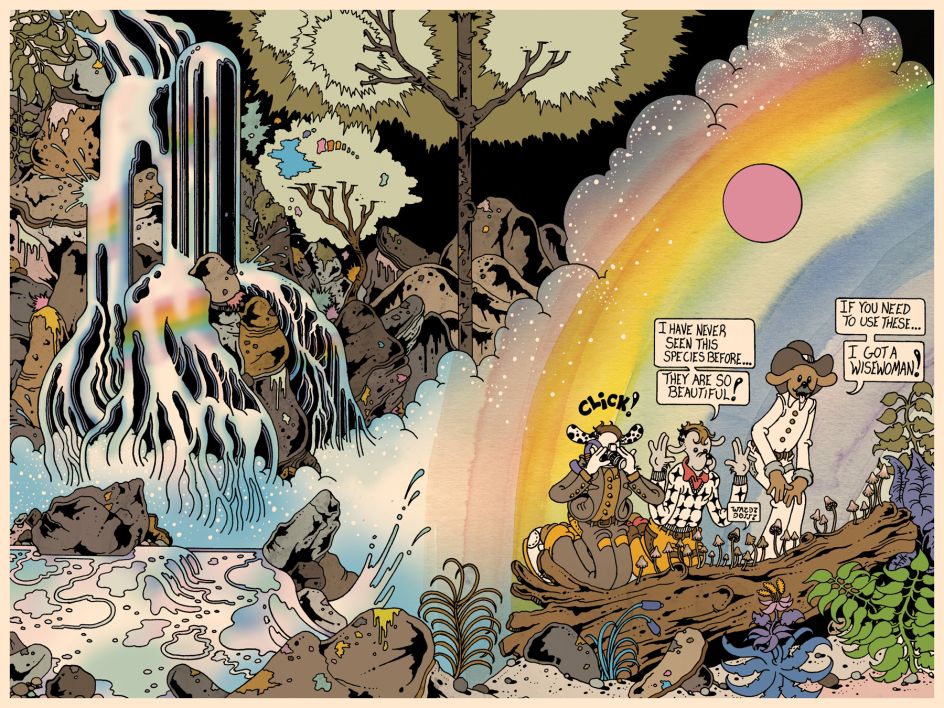
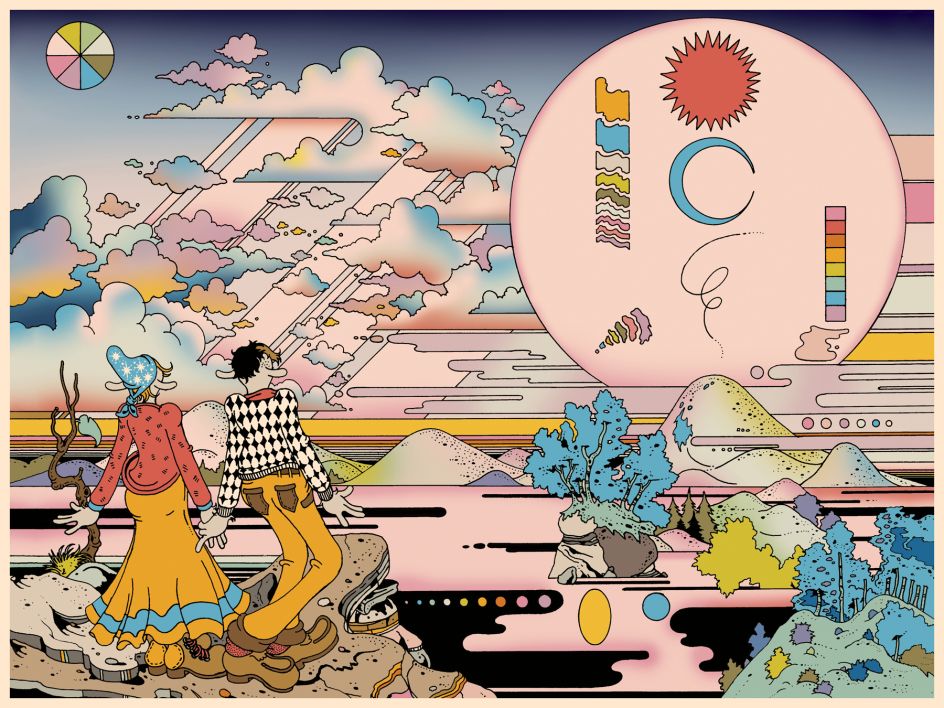
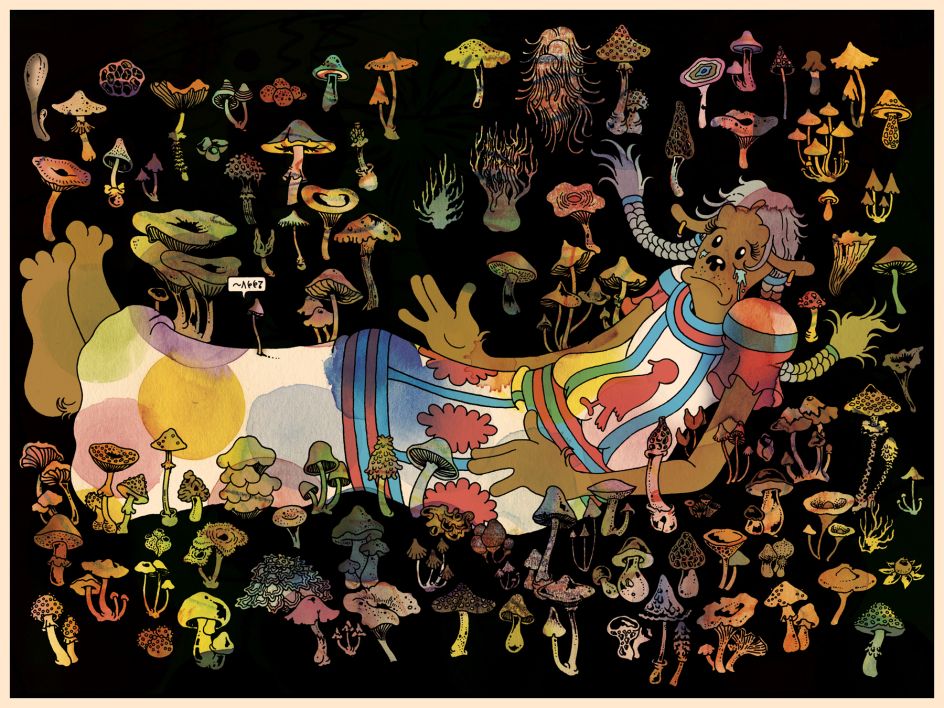
From Russian folk wisdom to midcentury Manhattan, from the indigenous traditions of the Mazatec people of Mexico to the mysteries of ancient Rome, the psychedelic volume has been described as an "illustrated globetrotting vision of science and mysticism" and includes appearances by J.P. Morgan, Robert Graves, Life Magazine, and the CIA. The title itself pays homage to Gordon and Roger Heim's Les Champignons Hallucinogènes du Mexique, in which a new species, Psilocybe Wassonii, was proposed in honour of the Wassons' work. Alas, just weeks before, another name for the species had been published, usurping Roger Heim and the Wassons'[ hard-earned multi-year effort in the taxonomy of Mexican psilocybes.
An illustrator, cartoonist and musician based in Brooklyn, Brian's previous publications include the zines Xak's Wax, iPhone 64: A User's Guide, and Hypermaze. He's also a veteran of the underground music and arts scene whose work has graced numerous album covers. He describes his style as "classical cartooning". "It's a mix of the Old Masters, such as Carl Banks, Floyd Gottfredson, Herge, George McManus, Suihō Tagawa," he explains, "with as much personal gusto as I can muster. My own humiliating spin on the classic records. Adult contemporary dog-face. Whether or not I succeed at that, that's up to you, dearest kindest readers."
You can discover more of Brian Blomerth's work at brianblomerth.com. Mycelium Wassonii, meanwhile, will be published on 30 November by Anthology Editions.
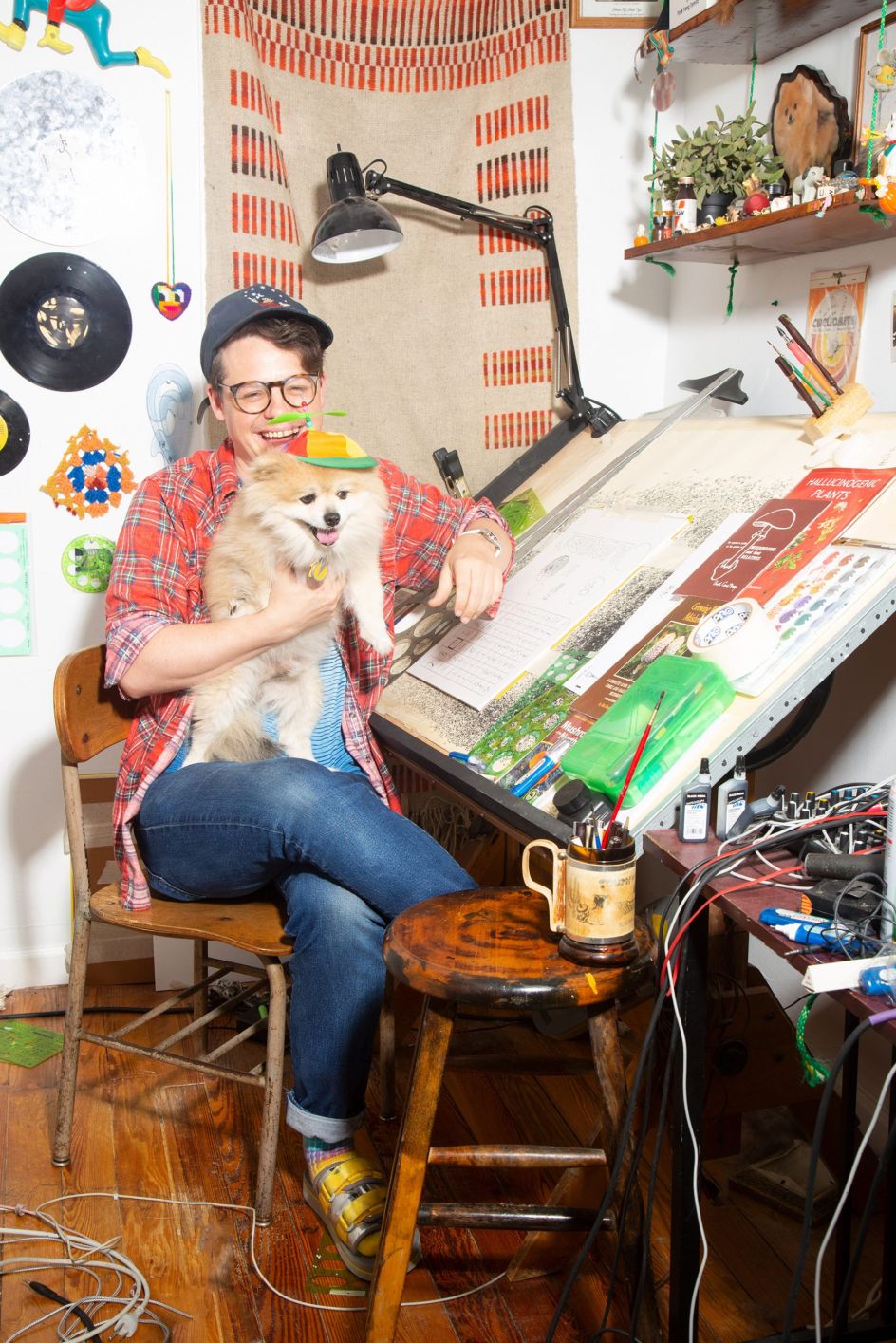
Brian Blomerth (Photo credit: © Dondre Stuetley)




 by Tüpokompanii](https://www.creativeboom.com/upload/articles/58/58684538770fb5b428dc1882f7a732f153500153_732.jpg)


 using <a href="https://www.ohnotype.co/fonts/obviously" target="_blank">Obviously</a> by Oh No Type Co., Art Director, Brand & Creative—Spotify](https://www.creativeboom.com/upload/articles/6e/6ed31eddc26fa563f213fc76d6993dab9231ffe4_732.jpg)









